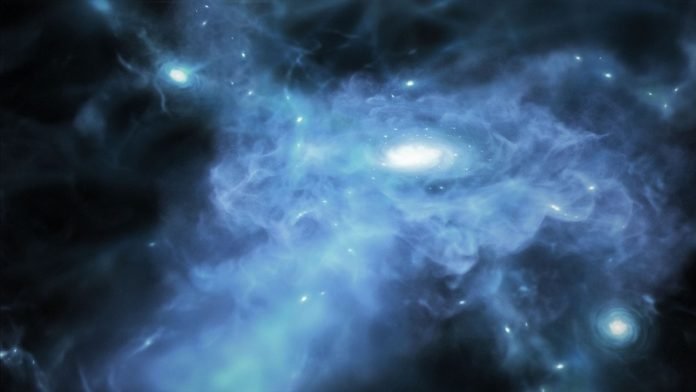
Researchers at the University of Copenhagen have used the James Webb Space Telescope to witness the birth of three of the universe’s earliest galaxies, formed over 13 billion years ago.
This groundbreaking discovery, published in Science, offers new insights into the universe’s origins.
For the first time, scientists at the Niels Bohr Institute observed the formation of galaxies that date back to between 13.3 and 13.4 billion years ago.
This significant discovery provides direct images of galaxy formation, a process previously only theorized and simulated on computers.
The James Webb Space Telescope allowed researchers to capture signals from large amounts of gas accumulating to form a mini-galaxy.
Assistant Professor Kasper Elm Heintz, who led the study, explained that these are the first “direct” images of galaxy formation ever seen.
While the telescope had shown early galaxies before, this is the first time scientists have observed their actual birth and the creation of the first star systems.
The formation of these galaxies is estimated to have occurred roughly 400–600 million years after the Big Bang, which is relatively early in the universe’s 13.8-billion-year history.
Shortly after the Big Bang, the universe was filled with an opaque gas of hydrogen atoms.
Over a few hundred million years, the first stars formed, and stars and gas began to coalesce into galaxies. The researchers observed the beginning of this process.
This galaxy formation occurred during a period known as the Epoch of Reionization, when the first galaxies’ energy and light broke through the hydrogen gas.
The researchers captured these large amounts of hydrogen gas using the James Webb Space Telescope’s infrared vision, marking the most distant measurement of cold, neutral hydrogen gas to date.
The study was conducted by Kasper Elm Heintz, in collaboration with Darach Watson, Gabriel Brammer, and Ph.D. student Simone Vejlgaard from the Cosmic Dawn Center at the Niels Bohr Institute. This discovery brings the team closer to understanding the dawn of the universe.
The research team has applied for more observation time with the James Webb Space Telescope to build on their findings and learn more about the early formation of galaxies. They aim to map these observations in greater detail and push the limits of how far into the universe they can see.
This new knowledge helps answer one of humanity’s most fundamental questions: “Where do we come from?”
By shedding light on the creation of the universe’s first structures, researchers hope to piece together more of the puzzle and deepen our understanding of our origins.



